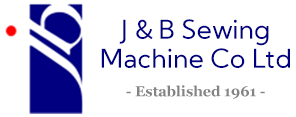Industrial Needles UK
Industrial sewing machine needles come in a huge variety of styles (Class or System), Size (Diameter) and Point type. Whilst initially confusing, once the style or Class of needle is known (this is setby the sewing machine manufacturer), the Size and Point type depend upon the products being sewn.
The Class of needle is shown in a number of different formats, with each machine manufacturer or Country using their own numbering system. For example, 135 x 7 (Singer) 134R (Pfaff) and DPx5 (Japan) are all the same needle, having a shank diameter of 2.00 mm and a length (top of shank to top of eye) of 33.9 mm. There are many other class designations, but the above are the more common.
Similarly, each manufacturer seemed to use a different sizing designation but Size always refers to the diameter of the blade of the needle. The most common Size designations used are either the Singer, 10, 12, 14, 16, (these numbers are arbitrary and have no actual reference to mm or inches, or the Nm method used by Schmetz, Groz-Beckert and Organ, where the Size divided by 100 is the actual diameter of the needle in millimetres. (For example, a size 90 needle has a blade diameter of 0.9 mm). The Singer and
Schmetz Sizes are connected, in as much as a 10 = 70, 12 = 80, 14 = 90, 16 = 100, 18 = 110, but then they change to 19 = 120, 20 = 125, 21 = 130 etc. A complete reference to manufacturers and needle Sizes can be found in the “files” section of this page. In addition, you will find a needle size – thread size recommendation page in the same place.
There are many different Point types available to suit a wide variety of applications. The most commonly used is a regular round point (R) but also available are ballpoint (for synthetic fabrics) (SES/FFG for light ball, SUK/FG for medium ball) and a whole variety of points suitable for leather fabrics. Please see the complete Point information pages in our “files” section.
It is impossible to list the needle type suited for each Make and Model of machine as the list would run into hundreds of pages. Therefore feel free to contact us at any time if you have difficulties in identifying the needle type you require or the size suited to your application and thread. We will be more than happy to assist you in your selection.








